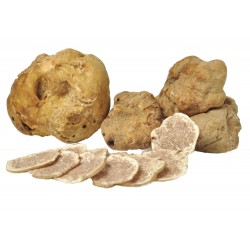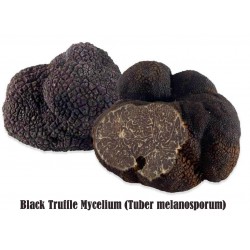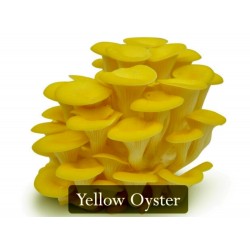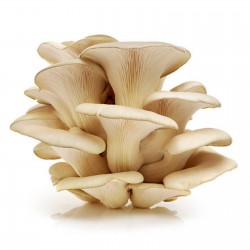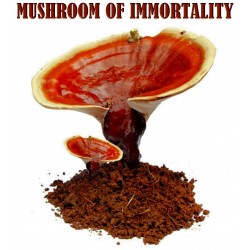Seeds Gallery Com,
5/
5
<h2>Линчжи или Рейши, Мицелий, Споры, Семена (<span lang="la" xml:lang="la">Ganoderma lucidum</span><span>)</span></h2>
<h2><span style="color:#ff0000;">Цена пакета 10 дюбелей / штекер.</span></h2>
<p><b>Трутови́к лакиро́ванный</b><span>, или </span><b>Ганоде́рма лакированная</b><span> (также возможны названия </span><b>Линчжи</b><span> или </span><b>Рейши</b><span>) (</span>лат.<span> </span><span lang="la" xml:lang="la">Ganoderma lucidum</span><span>) — </span>гриб<span> рода </span>Ганодерма<span>(</span><i><span lang="la" xml:lang="la">Ganoderma</span></i><span>), в настоящее время включаемого в семейство </span><i>Polyporaceae</i><span>.</span></p>
<h2><span class="mw-headline">Название</span></h2>
<p>В<span> </span>Китае<span> </span>и<span> </span>Корее<span> </span>гриб известен как «лин-чжи» (Гриб/трава бессмертия), в<span> </span>Японии<span> </span>этот гриб наиболее известен под именами «рэйси» (гриб духовной силы) и «маннэнтакэ» (десятитысячелетний гриб). В России препараты из этого гриба (настойки,<span> </span>экстракты, сухие экстракты в<span> </span>капсулах) встречаются и продаются под названием «линьчжи», «линчи» и «рейши».</p>
<h2><span></span><span class="mw-headline">Описание</span></h2>
<div class="thumb tleft">
<div class="thumbinner"><img alt="Линчжи или Рейши, Мицелий, Споры, Семена" src="https://upload.wikimedia.org/wikipedia/commons/thumb/8/87/Ganoderma-lucidum-%28Fastiv%29-hymenophore.jpg/220px-Ganoderma-lucidum-%28Fastiv%29-hymenophore.jpg" width="220" height="249" class="thumbimage" title="Линчжи или Рейши, Мицелий, Споры, Семена" /><div class="thumbcaption">
<div class="magnify"></div>
Гименофор</div>
</div>
</div>
<p>Плодовые тела<span> </span>однолетние, изредка 2—3-летние,<span> </span>шляпконожечные.<span> </span>Шляпка<span> </span>(3—8)×(10—25)×(2—3) см, почковидная или почти яйцевидная, плоская. Кожица гладкая, блестящая, неровная, волнистая, разделённая на множество концентрических колец роста, имеющих различные оттенки.</p>
<p>Мякоть<span> </span>очень плотная и деревянистая, охристого цвета, без запаха и вкуса.<span> </span>Гименофор<span> </span>трубчатый с мелкими и округлыми порами по 4—5 на 1 мм². Трубочки короткие, охряные.</p>
<p>Ножка<span> </span>5—25 см в высоту, 1—3 см в диаметре, боковая, длинная, цилиндрическая, неровная и очень плотная.</p>
<p>Споровый порошок<span> </span>коричневый.</p>
<h3><span></span><span class="mw-headline">Изменчивость</span></h3>
<p>Цвет шляпки варьирует от красноватого до буро-фиолетового, или (иногда), чёрного с желтоватым оттенком и хорошо видимыми кольцами роста. Мякоть сначала губчатая, потом деревянистая. Поры сначала беловатые, с возрастом желтеют и буреют.</p>
<p>Гриб имеет несколько разновидностей; кроме того его внешний вид и состав, а также терапевтические свойства могут меняться в зависимости от субстрата.</p>
<h2><span></span><span class="mw-headline">Экология и распространение</span></h2>
<div class="hatnote">Основная статья:<span> </span><b>Экологические группы грибов</b></div>
<p>Трутовик лакированный —<span> </span>сапрофит, разрушитель древесины (вызывает белую гниль). Встречается почти во всех странах света у основания ослабленных и погибающих деревьев, а также на мертвой древесине лиственных пород, очень редко на древесине хвойных. Изредка трутовик лакированный встречается на живых деревьях, однако чаще плодовые тела обнаруживают на пнях, недалеко от поверхности почвы. Иногда плодовые тела, выросшие на погруженных в землю корнях деревьев, можно найти непосредственно на почве. Во время роста гриб может вбирать в шляпку веточки, листья и прочий сор. В России трутовик лакированный распространен по преимуществу в южных районах, в<span> </span>Ставропольском<span> </span>и<span> </span>Краснодарском<span> </span>краях, на<span> </span>Северном Кавказе. В<span> </span>умеренных широтах<span> </span>встречается реже, чем в<span> </span>субтропиках. Однако в последнее время широко распространился на Алтае, в местах ведения хищнических вырубок.<span></span><sup class="noprint">[<i><span title="не указан источник на утверждение (29 февраля 2016)">источник не указан 1371 день</span></i>]</sup></p>
<p><b>Сезон</b>: с июля до поздней осени.</p>
<h2><span></span><span class="mw-headline">Сходные виды</span></h2>
<p>Отсутствуют, так как среди трутовиков это единственный вид, имеющий ножку.</p>
<h2><span></span><span class="mw-headline">Культивирование</span></h2>
<div class="hatnote">Основная статья:<span> </span><b>Грибоводство</b></div>
<p>Культивирование<span> </span><i>Ganoderma lucidum</i><span> </span>проводят исключительно для медицинских целей. Сырьём для получения<span> </span>биологически активных веществ<span> </span>традиционно служат плодовые тела, значительно реже вегетативный<span> </span>мицелий<span> </span>этого гриба. Плодовые тела получают по экстенсивной и интенсивной технологиям. Вегетативный мицелий<span> </span><i>Ganoderma lucidum</i><span> </span>получают методом погруженного культивирования.</p>
<p>Ганодерму высоко ценят и культивируют в странах Юго-Восточной Азии.</p>
<h2><span></span><span class="mw-headline">Применение</span></h2>
<div class="hatnote">Гриб <i>Ganoderma lucidum</i> один из известных базидиальных грибов, используемый в лечебных целях более двух тысяч лет народами Юго-восточной Азии. Линьчжи упоминается во многих древних китайских медицинских книгах: «Травник Шэнь Нуна» (Шень Нунь Бень Цао Цинь) «Компендиум лекарственных веществ» и др. Монография (Бэнь Цао Гань Му) описывает Линьчжи, как «верхнее» лекарство, что означает — самое драгоценное, подаренное небесами средство от болезней. Также в книгах подробно описывались характеристики, методы применения и лечебные действия Линьчжи: "…запах не резкий, вкус слегка горький, предназначен для устранения переполнения в груди, увеличения ци (энергии) сердца, питания средней части тела, укрепления памяти." Лекарства на основе Линьчжи расширяют коронарную артерию сердца, обогащают кровь кислородом, устраняют ишемическую болезнь сердца (ИБС), предотвращают инфаркт миокарда, нормализуют сердечную деятельность. Его применяли при разнообразных заболеваниях, в том числе бронхиальной астме, неврастении, гастрите, болезнях печени. В Китае этот гриб активно используют при лечении всех видов аллергии<sup id="cite_ref-1" class="reference">[1]</sup><sup class="noprint">[<i><span title="утверждение основано на неавторитетном источнике">неавторитетный источник?</span></i>]</sup>.</div>
<p>Интенсивные исследования<span> </span><i>Ganoderma lucidum</i><span> </span>в течение последних десятилетий показали, что биологически активные вещества, выделенные из этого гриба, оказывают<span> </span>иммуномодулирующее,<span> </span>противоопухолевое,<span> </span>противовирусное,<span> </span>антибиотическое,<span> </span>гиполипидемическое,<span> </span>гипогликемическое,<span> </span>гепатопротекторное,<span> </span>генопротекторное,<span> </span>противовоспалительное, противоаллергенное,<span> </span>антиоксидантноедействие, способны регулировать работу<span> </span>сердечно-сосудистой,<span> </span>дыхательной<span> </span>и<span> </span>нервной<span> </span>систем.</p>
<h3><span></span><span class="mw-headline">Биохимия</span></h3>
<p>Плодовые тела и<span> </span>мицелий<span> </span><i>Ganoderma lucidum</i><span> </span>содержат<span> </span>углеводы<span> </span>(восстанавливающие сахара и полисахариды),<span> </span>аминокислоты,<span> </span>пептиды,<span> </span>белки,<span> </span>тритерпены, включая<span> </span>стероиды,<span> </span>липиды,<span> </span>алкалоиды,<span> </span>гликозиды, летучие<span> </span>эфирные масла,<span> </span>витамины,<span> </span>микроэлементы, такие как<span> </span>магний,<span> </span>марганец,<span> </span>молибден,<span> </span>кальций,<span> </span>цинк,<span> </span>калий,<span> </span>натрий,<span> </span>железо,<span> </span>медь,<span> </span>сера,<span> </span>германий. Германий, содержащийся в высоких концентрациях в плодовых телах<span> </span><i>Ganoderma lucidum</i>, находится в составе органического соединения карбоксиэтил-германий-сесквиоксид.</p>
<p>Наиболее важными биологически активными соединениями, выделенными из этого гриба, являются полисахариды и тритерпены. Практически все профилактические и терапевтические эффекты, известные у трутовика лакированного, обнаружены именно у этих двух групп соединений.</p>
P 407

